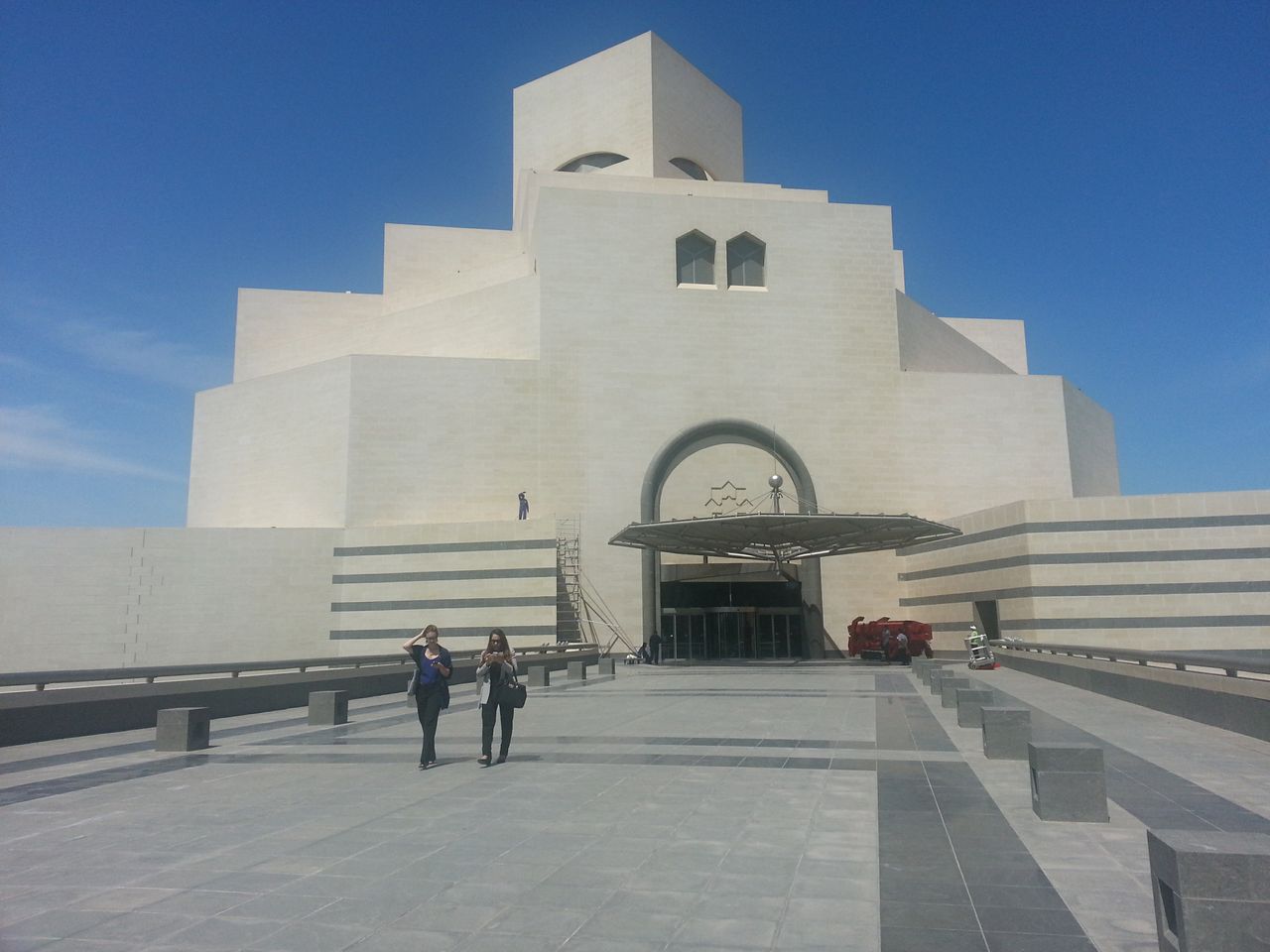Qatar Museums Authority (QMA) was more than a welcoming host to my trip to the Spring 2014 exhibitions led by Her Excellency Sheikha Al Mayassa Bint Hamad Bin Khalifa Al Thani which is a programme of exhibitions across the cultural sites of Qatar. I eagerly attended a press conference at Mathaf where I was looking forward to having my cultural senses stimulated. I was more than pleasantly surprised when I was introduced to the work of Etel Adnan, a Lebanese-American artist who led an incredible life! Similar to nature, the artistic and literary collection of Etel Adnan’s multidimensional work consists of an exploration of her paintings, drawings, leporellos, tapestries, writings and films from the 1960s onwards.

Later that day was I awestruck by the sight of a piece composed of thousands of clear glass marbles laid directly onto the ground. Mona Hatoum’s work is her largest solo exhibition to date in the Arab world that proudly displays more than 70 bold creations ranging from large-scale room installations to smaller works on paper, sculptural objects, photographs and portraits. My senses continued to be given the royal treatment as I attended the performance of “Adnan Songbook” by the Qatar Philharmonic Orchestra.

Day 2 consisted of a field trip to Al Zubara ruins led by Professor Thomas Leisten and Faisal Al Naimi. We were greeted by hospitable locals who showed us around Al Zubara and educated us on its history. Al Zubara is a deserted town founded by merchants from Kuwait in the mid 18th century. Once a successful centre of global trade and pearl fishing positioned midway between the Strait of Hormuz and the west arm of the Persian Gulf. It is one of the largest and best-kept examples of an 18th-19th century merchant town which provides an important insight into urban life, spatial organization, and the social and economic history of the Gulf before the discovery of oil and gas in the 20th century.
Day 3 was the Kings & Pawns press event at the Museum of Islamic Art (MIA). King & Pawns: Board Games from India to Spain will be showing in the Special Exhibitions Gallery at the Museum of Islamic Art from 19 March to 21 June 2014. This exhibition uncovers the history of board games in the Islamic world, from India to Spain between the 7th and the 20th century.
The show focuses heavily on chess, from its origins in India to its adoption by the Persian élite and its subsequent spread across the Middle East, North Africa and Europe following the rise of Islam. However, a significant part of Kings & Pawns will also examine other board games with Indian and Islamic connections bringing to life the spread of ideas and shared culture over the centuries. Board Games from India to Spain will be showing in the Special Exhibitions Gallery at the Museum of Islamic Art from 19 March to 21 June 2014.

I later attended a lunch hosted by the QMA team along with the rest of the journalists and Brunswick team, where we met Hala Al Khalifa. Al Khalifa joined QMA in 2008 as Head of Art Education at the Museum of Islamic Art and as a practicing artist she exhibits her work both locally and internationally. Her passion for the arts and her direct contact with local and international artists offers her a fertile place to grow and achieve from. She is a firm believer of important and positive role that QMA has been achieving in the fields of art and culture, and she is proud to be part of this institution.
For more information, visit their website www.qma.com.qa
– Rula Khatib-Yanis







